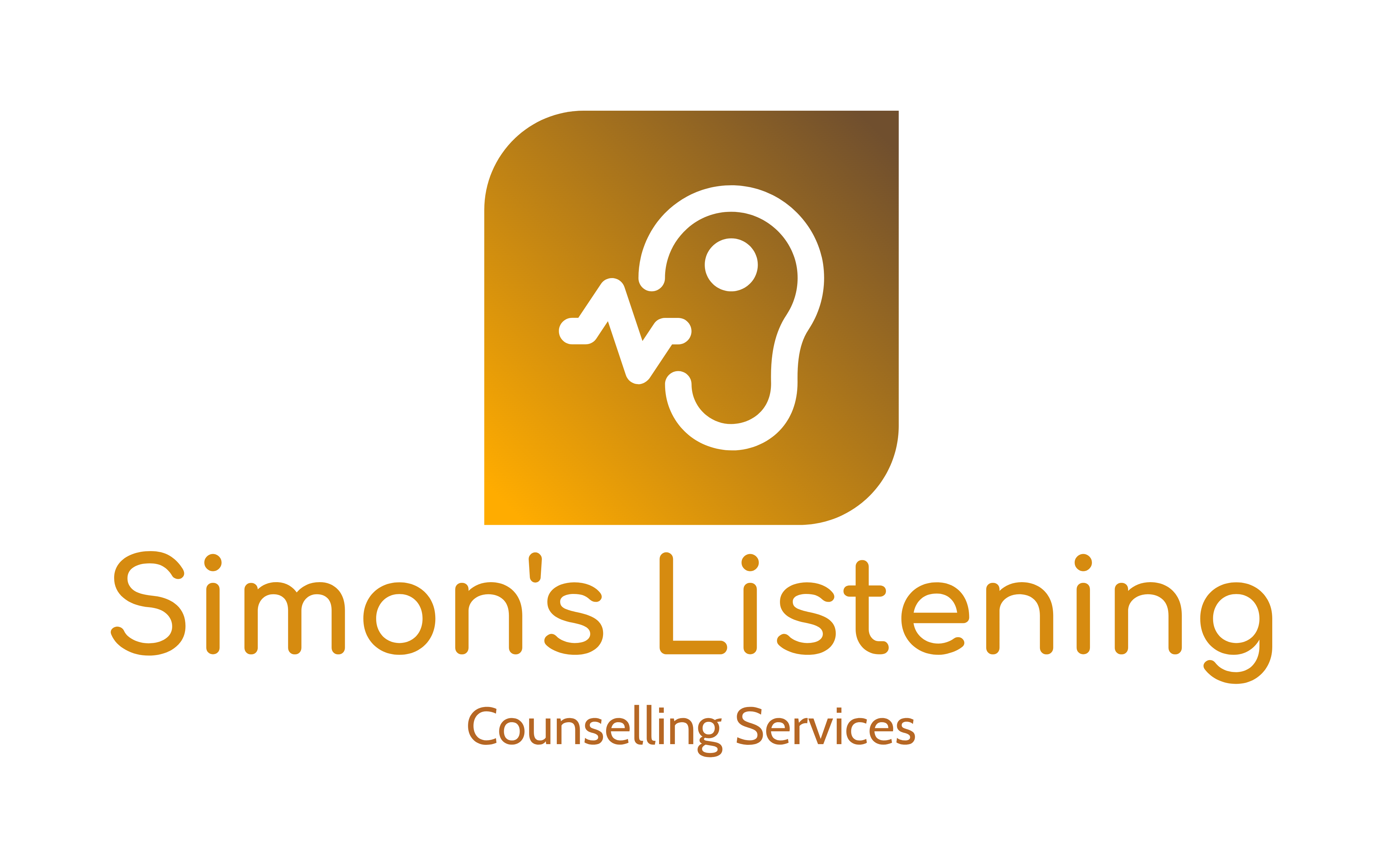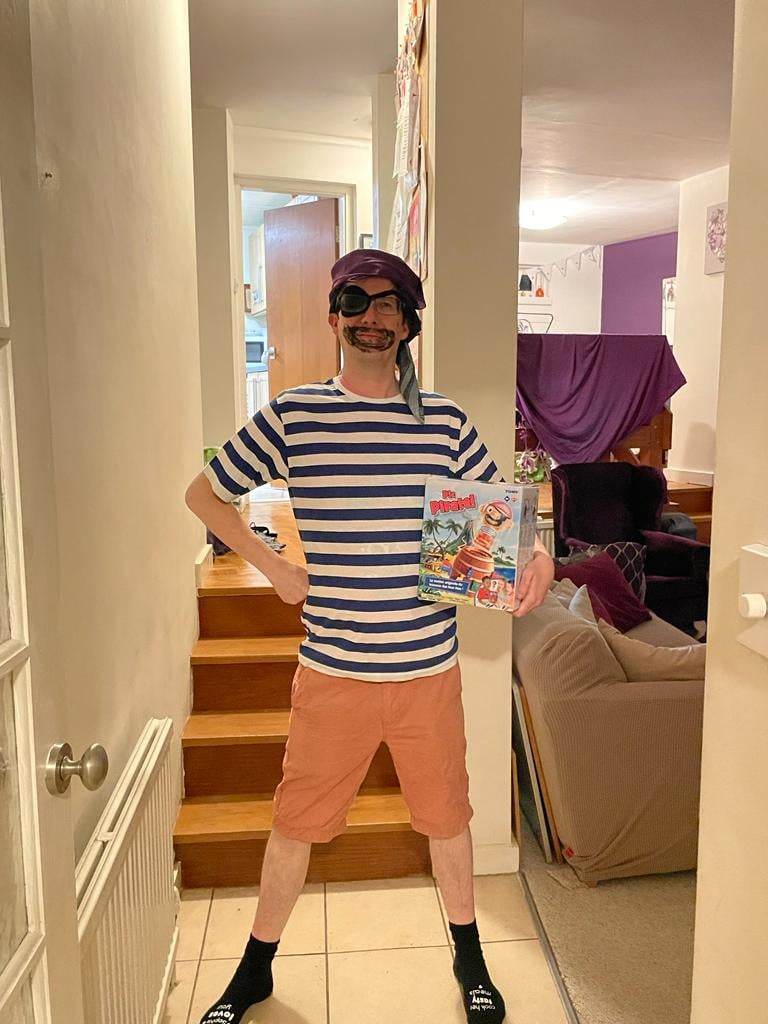Peer Supervision A Complete Guide
Are you a therapist, counsellor, or coach?
Do you want to save money, gain clinical experience to a more diverse range of clients and presenting issues, learn other interventions, and build a community network of other therapists?
In which case, this article is for you. It’s about equipping you to set up and participate in peer supervision groups and handle those anxieties on if you are good enough to do this.
This article is tailored to counsellors and professionals in the mental health sector – if this doesn’t apply you are still very welcome to continue reading/watching the video, but there are some sections that you may want to skip – if you aren’t working, training, or volunteering in this field you might also want to consider from this setting up a group for mental wellbeing.
Feel free to use the Contents to skip to section relevant to you. You can also watch this article as a video below.
Contents
Aim
1. To explain what supervision is used for in counselling, and ethical requirements with accrediting bodies such as the BACP
2. To demystify what happens within peer supervision groups with some practical tips and considerations.
3. To encourage people to be able to set up and take part in their own peer supervision groups
Supervision Definition
“Super” comes from the Latin for above or beyond
“Vision” means to be able to see
Supervision is then, seeing another person or group of persons who can look beyond us at our counselling practice – they will likely have training and expertise above ours and likely be further ahead in their counselling journey to help be objective and give us a different perspective. You may have also heard supervision described as Consultatory Support.
Purposes of Supervision
Client Work
As counsellors, we hold complete confidentiality about the client work we do, not even speaking with our loved ones.
This can lead us to be less objective, have risks on personal burnout if we are spending time with people talking about things that are very distressing in their lives, there can be transference or impacts from ours/clients patterns of relating, and client work can resonate with our own personal history or stuff we are going through.
We do certain interventions that can work with some folks and not with other folks. Clients are not all the same with different presenting issues, as well as being culturally and neurologically diverse. They each have their own history and cultural context and all of this blends together with how they relate to you as a therapist and any training or understanding you need to build therapeutic contact.
Because every client and every therapeutic relationship is unique, it is then vital that there is another human being we can speak with who can help us to be objective and support us in our client work. Client work is the foundation of supervision, and mostly what it is used for.
Acting Ethically
The BACP are an accrediting body who ensure counsellors are trained to standard and act professionally in a moral and ethical way. There are numerous ethical frameworks such as the NCPS or ACC, but I’m going to focus on BACP as I am part of them and they are the largest and most well known.
The BACP produce numerous Good Practice in Action Guidelines for specific issues and have an Ethical Framework that we follow as counsellors. At least annually, counsellors are meant to go through this framework with their supervisor to reflect on ethical practice. This helps us consider any conflicts of interest, that we are serving the client’s best interests, that we are remaining boundaried, and that we are acting for their good without anything nefarious going on. The ethical framework is more about teaching values, moral qualities, and ethics rather than being prescriptive for all dilemmas and that alongside supervision help us to be ethical in our considerations and reflections on our practice.
Continual Professional Development (CPD)
CPD is what reading, training, courses and groups we are part of to develop our practices. The BACP ask we do at least 30 hours of it, and if you read this article or watch this video then that’s an example of 50 mins of CPD.
One of the joys of being a counsellor, is that there’s always more you can learn:
> Techniques, interventions and theory
> Presenting issues such as mental health conditions, life events, neurotypes and behaviours
> Cultural backgrounds and family dynamics
> Different ways of counselling such as CYP, couples, family therapy, brief therapy, EMDR, or groups
> Education around your practice such as on business, marketing and finances.
Running your own business
If you are in private practice, you are also managing a small business.
If you are not in PP, then there will still be a political backdrop and business dynamics to the company, charity, statutory body, public services, or agency you work with.
When we are training to be a counsellor, we are taught how to counsel and be self-aware, but are never taught how to market our business, liaise with colleagues, or do a self-assessment tax return.
These things fall outside of the room, but are integral to running or being a part of a successful business and legitimate strains and concerns on our business as counsellors.
Supervision can be a space to talk about financial concerns, business advice, and practical tips like if we use an electronic calendar with scheduling. Hopefully your supervisor will also be more experienced to give some advice on these business concerns, or at the very least empathise with the strains of running a private practice.
Self-Care
Having worked in Homelessness now for over 13 years, I’ve sadly seen a lot of burn out. The same in talking therapies and coaching. We are human beings, rather than divine beings that have fully actualised and are immune to strains and life events.
Sometimes supervision can be used to help consider our self-care strategies or work life balance, looking at what support we have in our lives, and it may be that a life event (say if my beloved cat died) impacts on our ability to counsel and we need to take some time off and manage that, it may be that we need some of time in supervision to just be heard (almost like in personal counselling – and part of that might be deciding with our supervisor to access personal counselling – I tend to dip in for a good 6 sessions a year).
Supervision is not counselling, although all supervisors should really be counsellors. If supervision is becoming more like counselling, the dynamic should be reflected on, but supervision is therapeutic. As a relational counsellor, I avoid techniques, and believe the benefit of therapy is encounter – entering the void with the client – we are the therapy.
Supervision is (for me) mostly about encountering the blocks and difficulties that emerge within me in response to clients so that I can better empathise with their experience in an accepting way, and much of that path has resonance to counselling.
Community
Counselling can be quite a lonely profession. Much of your professional life is spent alone focussed on clients’ issues with less time to network with peers or get outside perspective.
Supervision (especially group or peer supervision) is an opportunity to network and get to know other professionals which can help with referrals, isolation, and building connections within the therapy world.
Side Point: it can also be quite an immobile career path where movement e.g. exervice needs to be more intentional.
Supervisory Relationship
You develop a personal relationship with your supervisor or a consistent peer supervision group. This can help with the sense of personal safety you need to express vulnerability. It’s pivotal in supervision that you can speak about mistakes, ruptures in your client work, any feelings (positive or negative) you experience towards a client, how clients resonate with you, and any concerns or safeguarding you have and these things (particularly if shameful) are hard to discuss without safety within supervision. If we don’t bring them to supervision though, there is risk of it leading towards unethical practice.
A regular supervisory relationship builds a relationship, so they get a sense of who you are, your personality, and way of working. They will intuit when you are acting differently with different clients to challenge and support you. They will also be able to use immediacy to utilise what is happening between you and them to see if this gives insights into the therapeutic relationship with your clients. Sometimes supervisors will advise or educate, but relational encounter with your supervisor or peers can be formative in itself within your client work.
Emergency Contact
Occasionally there can be risks to clients and others in their lives or safeguarding concerns. The big ones being suicide, severe crimes, child abuse or neglect, money laundering, and terrorism. This can impact on your confidentiality and may mean you need to speak to other professionals or services about your client to protect them, the public or others. You may also have legal issues with a complaint filed against you, or indemnity issues.
In all these cases, it cannot simply wait a month for your next session and supervisors will usually have an out of hours contract where you can message them for emergency supervision. It may also be that you’re simply quite rocked by a session – a client may, for example, be exploring similar traumas to what you have faced in life and you feel quite dysregulated after a session. Emergency contact are a reason to continue with individual supervision, and not to sacrifice that for Peer Supervision.
Summary so far
I hope that rather than seeing supervision as a chore you are required to do, you see it as a vital component in a thriving practice, and it may have enhanced what you bring to it beyond just clinical matters. Of the purposes I have mentioned, Peer Supervision is most focussed on clinical support and community. I’d like to encourage you as the reader to set up or take part in a group, but not for that to replace individual supervision. You will need that for business purposes, for a consistent relationship, for someone who knows your practice well, for emergency contact and responsibility, and as a point of contact for letters – for example, if you are going through accreditation.
Regulation of Supervision
Counselling isn’t a regulated profession or protected title. Anyone could call themselves a counsellor (though you’d be unlikely to survive as a business without referral options or be insured to work safely). There are a number of accrediting bodies that regulate counselling though, and I will focus on the British Association of Counselling and Psychotherapy (BACP) – who I am part of.
The BACP ensure counsellors are adequately trained (usually a minimum of four years part time training with a supervised placement of >100 hours), that they practice ethically, and that they maintain standards such as the 30 hours of CPD.
Some countries, like the US, require people to have supervision only when they are in training and once they become a qualified counsellor that requirement for supervision stops.
In Britain, we expect counsellors to be having supervision regularly throughout their career at least monthly for 90 minutes.
If you are a qualified counsellor (accredited, registered, or individual), the BACP require a minimum of 90min a month which can be any combination of Individual, Group or Peer Supervision. These are minimum and you may choose more e.g. depending on client load and the nature of your client load.
If you are a trainee counsellor, doing core training (like a level 4) on placement, you need to have supervision at least once every 2 weeks. You still must do the 90min a month plus an additional hour for each 8 hours of client work in a month (baring in mind, a month is 4.3 weeks). A client load of 2 clients a week would then be 8.6 hours a month and need 2.5 hours of supervision a calandar month.
As a trainee, you must be supervised by a trained supervisor ether individually or within group supervision, and cannot count Peer Supervision towards your required hours (I encourage you to do Peer Supervision, you just can’t count it).
For individual supervision, you can count every minute of it towards the requirements, so two hours would count as two hours.
For group or peer supervision it depends on the group size. For groups of 4 or less (excluding a supervisor if it is group rather than peer), you divide the time in half; so that 2 hour group would count as 1 hour claimed.
For groups of >4 you divide it by the number of people in the group, so a 2h group with 5 people would be 24 minutes.
For this reason, Group Supervision or Peer Supervision is usually capped at 4 supervisees to make logging it viable. I would also suggest groups of >4 would not enable enough time for each member to meet their personal clinical needs.
Individual, Group or Peer
Individual
A supervision with just you and your individual supervisor. It will be the most expensive option, but I would say a necessity to have – even if you just meet for an hour a month. You will be able to talk about the full range of purposes of supervision (though they will meet the need of community less than groups).
Group Supervision
One qualified supervisor leading a group of 4 or less supervisees. This service is usually paid for, but cheaper than individual. The other supervisees may well respond when one supervisee is bringing their client, but much of the supervision of them will be from the group supervisor to the supervisees.
Peer Supervision
4 or less supervisees with no supervisor. All of them are supervising each other in turns, and usually it is free to participate (perhaps a small cost for admin or room hire). There may well be a facilitator who schedules the session and helps with timekeeping etc, but all the members of this group are equal in terms of power dynamics.
The biggest allure to this is the cost – being a counsellor is expensive, with most BACP members earning <£10k and working part time whilst training and business costs can remain high.
Peer supervision also has the benefits of group supervision such as building exposure to other ways of working and different client issues, as well as forming connections with peers that can be useful with the loneliness of the role.
Peer Supervision Considerations
The rest of this article are specific to Peer Supervisions to help you establish a group and consider how to structure it.
Modality
If you look at the BACP’s A-Z of Therapy you will find over 35 different modalities. Modalities are the theory or philosophy of therapy, they inform the interventions we use and our understanding of what therapeutic growth looks like. Some of them blend quite nicely, whereas others struggle more to integrate (for example, how can we both direct a client as well as believing they should direct themselves; or believe their troubles are hidden within the subconscious whilst not believing in a subconscious?).
It can be quite overwhelming and one way of compromise may be to break those 35 modalities down into rough schools:
-Psychodynamic approaches that work from a more medical perspective with the therapist as an expert working through manifestations of the clients unconscious defences
– Cognitive or behavioural approaches with specific interventions and homework tailored to particular presenting issues with the therapist guiding the interventions
– Relational approaches trying to empathise with and enhance the clients ability to find their own resources to help with what brings them to therapy.
It feels important when you are training to rigidly stick to a school of therapy, but as your practice evolves this will likely loosen. Have an individual supervisor who practices the same as you as an anchor, but it’s okay if people in your group approach the theory in a compatible but slightly different way. In my experience working with a variety of therapists, we have never really got into an argument about how to treat a client. It’s more others trying to guess what’s going on and offer their wisdom on how they would work with them.
As a person centred counsellor, I don’t do techniques – it’s all about the relationship, but if you’ve read much of my content you’ll realise that I am quite happy to psychoeducate (not all PCT are). Some of my content is also not PC at all – grounding techniques & the window of tolerance, for example, are trauma interventions but I find clients often want something to have control if they’re experiencing panic attacks and I was first introduced to them within a supervision group. There are other times I have found the advice unhelpful (a group member telling me about borderline personality disorder from a psychodynamic perspective) and torn my way of working, but generally others insights usually help and I now have the wisdom to accept or reject advice from peers in groups and voice that if it’s helpful and necessary.
Demographics
Finding a group based on theoretical modality can be complicated and likely will need compromise. This is even harder when we consider every therapist will have specific demographics they work with.
It may be certain presenting issues like mental health, neurodivergence, transitions, behaviours, or conflicts.
It may be that counsellors work with specific people groups such as culture, age, subcultures, or geographical areas.
We may work within particular settings like organisations, charities, schools, unis, prisons, or retirement homes.
It may be that we have a specialism like working with Children & Young People (CYP), couples, families, groups, or offer more specialist interventions like EMDR or hypnosis.
Your peer group will almost certainly have counsellors who practice differently to you with modality, and it will definitely have differences in demographics because every client in unique.
Peer Supervision can expose you to presenting issues and demographics you don’t usually encounter which will enrich you as a therapist. It’s also been great for referrals. I, for example, will work with trauma and eating disorders, but they’re both not my specialism and I know some excellent therapists through peer groups or networking that I can refer onto who will be able to hold them and give some real expertise with these presenting issues if a client seems to need more than I specialise in. In the same way, no peer in my group has as great an understanding of homelessness as me or they might refer some of their AuDHD clients my way to offer than deeper knowledge and understanding.
How do you find a group?
A recent study we did with Aligned Therapy found that 10/25 therapist were interested in Peer Supervision Groups.
It is a need with great benefits like cost saving, community, and helping learning. If you want to join or create a peer supervision group, you are not alone, and I write this to encourage you to dare to ask others if they fancy being in one?
Don’t be afraid to start small – you don’t need 4 people, even if you just meet with two, it’s a group that can always be added to. A group of two will also give you just as much logged time as a group of 4.
Consider what groups you are already a part of. I’ve set up peer groups with counselling agencies/charities/organisations I’ve been part of by either contacting the director to ask or just asking peers within that group.
If you’re part of social media you may be in some counselling groups (on Facebook: Counselling Tutor, Counselling Private Practice, Counsellor’s Staffroom, New Therapists in Private Practice, Geek Therapy) or feel free to just search for other groups. Some of those groups will have dedicated posts where you can ask to join peer groups, others will allow you to advertise and ask members to set one up with you.
If you’re feeling brave, you could get on a directory like Counselling Directory and search for counsellors in your area. You could be very specific, identifying fellow therapists with similar ways or working or niches and client demographics to yourself. You can then contact them, saying they seem like someone you’d like to get to know, and asking if they’d like to be part of a free Peer Supervision or Personal Development Group with you e.g. I could search for humanistic counsellors working with AuDHD in Oxford.
A final tip is to contact peers that were in your core counselling training. Your training likely delivered a specific modality, and you’d already have shared learnings and connection with them that make for a great peer group. If you’re doing a course, like a level 4, you could also discuss in personal development groups, or with your tutor, if it would be appropriate and okay to set up a peer group (we set one up with 4 of us that we called MindQuad – I still occasionally look through the memes in the WhatsApp group).
In setting up a group, you’re doing people a favour they generally want rather than being a nuisance.
Scheduling
As a dungeon master (DnD), I wish I had some tips for scheduling – it can destroy many a group.
I’d suggest you think about how long you want for peer supervision. Personally I like 37.5min a person (I’ll explain later) but many therapists wouldn’t have a 2.5h block to pencil out once a month.
In the pilot we did with Aligned, 60 – 90min was most desired by supervisees, and with shorter groups you may want to think about how you divide the time more – but it makes it more accessible as it fits into empty client slots.
My biggest tip for scheduling would be to set up a group and have the same time every month, then at the end of each meeting agree the next and send out the link. For example, one of my groups is the first Tue of the month from 9-11:30 each month irrespective if some folks can’t make it.
I can struggle with offending people, but have sadly asked people to leave groups in the past if it doesn’t seem like they can consistently make a group (imagine, for example, you would only be able to make the group once a quarter) because it stops group dynamics forming. You could have a more Western Marches group where supervisees drop in and out, but for relational approaches to supervision, my main tips are:
1. Find out how long your peers want to meet for.
2. Set up a consistent calendar of when that group will happen.
Contract
As a counsellor, I have a two page Counselling Agreement and three page Data Processing Agreement, and on a first session spend about 10 minutes summarising the prior and mention what is in the later. It contains things such as:
– Boundaries
– Expectations
– Explanation of how I work
– Time we will meet
– Any cost to the counselling e.g. for the work or room hire
– Emergency contacts for clients and when I would contact them (I never have)
– Confidentiality and the limits of it (e.g. suicide, harm to self/others, terrorism, child protection, court cases requesting notes, and crimes like money laundering)
– out of session contact
– what happens if our signal dies out if we meet remotely
– How their data is handled and their rights
The peer groups I have been in have all been informal without a contract, but it may be you want to create one?
It would focus the group on the expectations and how the group runs, cover you for legal or liability issues, could cover all the previous bullet points, contain details on scheduling, be wider to look at boundaries of out-of-session contact e.g. if you have a group WhatsApp.
Personally, I’ve never bothered with a contract, but I leave it up to you if you and your peers want to produce one. Even a one page on based on my points here to make the running of the group more explicit and help cement norms. It may also be that you design a contract after a season in the group to help formalise norms as they are created.
How does it work?
There are many philosophies and approach to supervision, and it would be arrogant for me to tell you how to run your group. Groups also evolve as one organism so each group will have its own norms (no two peer groups I have been in have been the same, though they have similarities). I can speak about what I like though, which may inspire you on how to structure your group if each supervisee consents (feel free to share this article for their benefit, and the algorithms for me).
Total Time
As mentioned, most people in our pilot preferred shorter sessions of 60-90min which helps with scheduling as it only clashes with one or two clients. The downside of that is that you are claiming less time towards your monthly requirements.
Personally, I prefer 2-2.5 hours of peer supervision with a break in the middle to help my bladder and focus (in groups of 60-90 minutes, you likely won’t need a break but people should be free to leave if they need to use the loo). I like this, because for me, half an hour is a good amount of time to explore a client in a relational process driven way, whereas 15-20min needs to be very focused and interventions will be more solution-focussed (very well suited for CBT approaches).
Time boundaries
Some groups I have been in have flowed without supervisees taking turns. In my experience, this works very well in personal development groups or supervision looking at a presenting issue, but risks not everyone getting chance if they are bringing individual clients.
For me, I like a loose time boundary for each supervisee to bring a client so they each have chance to bring someone and reflect without fearing they will miss out on personal supervision (though the whole thing is supervision and you will gain even if you don’t bring your clients).
For that reason, I like working out how long we each have with some buffer time to check in or if someone overruns slightly. You may also talk about when you begin the session e.g. starting check-in after 5min if someone hasn’t arrived.
1. Check-in
A check in involves going round and saying how we are in this present moment. This is very important in relational approaches to supervision, because in doing so we are increasing our congruence and presence in the moment, which enables us to be more present with our felt-sense to others as they bring their clients. It also builds on that need of Connection and Community with peers. This may also start informally, or just feel like chat – chat isn’t untherapeutic, it’s relationship building which helps you therapeutically connect.
For the first session, your check-in will likely be much longer (you may even agree to not bring clients to the first session) with more of a focus on your practice: how you work, who you work with, and any of your personal history that is relevant.
2. Client Process
Work out how much time you each have depending on group size and session duration and bring an individual client. This will typically be between 10 – 30min depending on group size each. If you’re doing a longer peer supervision session of two hours plus, you may want a brief break half way through.
I’ll go into more detail about process later
3. Check-out
Saying how we are feeling in the present moment now peer supervision has ended. It can help debrief, and bookend supervision before returning to the rest of your day or client work.
In groups/DnD I often ask members to say if there is something that someone else has said that has particularly stood out for them, or anything they have learnt today. Repeating this can help us cement our learning, and complementing other members on something profound they have said can boost group cohesion and boost self-esteem in fellow members which increases enjoyment and their chances of wanting to return – particularly if they have been challenged in the process material.
4. Other stuff like notes and scheduling
Finally you may want to schedule in the next session, and after supervision I keep a log of my hours/type and write brief notes about what I have taken from supervision (for me, this is usually only a paragraph). Some people process better by writing notes as others speak – it helps them listen.
Process Time
Depending on group size and how long the session lasts, I have suggested that you will get somewhere between 10min to an hour a person, with most groups working out at 20-30mins.
This isn’t a lot of time, so my advice would be to focus on one client or one theme (say death anxiety is coming up a lot in your client work and you know less about it or it is resonating) that is coming up in your client-work (the prior being more usual).
The advantage of bringing one client, compared to individual supervision, is it gives chance to introduce that client and to inhabit them when you are seeking supervision.
Supervisees tend to start introducing a client with narrative: who they are, what they’ve come to counselling for, how they appear in the therapy room. We might move on from this to talk about us – any interventions we have done, how we perceive the client, how we act or feel towards them e.g. if they remind us of anyone.
Often during this process of bringing a client, a supervisee begins to inhabit them in a process called Parallel Process that can be a powerful tool in group supervisions as we act out our client’s process. A client might externalise others or situations and feel quite anxious, for example, and we might enter supervision with an anxious sense of hopelessness and be seeking advice from our peers. As a peer group develops, you will get to know your peers and the group safety will grow more to challenge, which enhances the frequency of challenge or immediate awareness of parallel processes.
After a peer has brought a client, the rest of the group can choose to respond. It may be they bring awareness of any of those parallel processes I mentioned, peers might advice with interventions they have used that they feel ay help this client, they might psychoeducate you with theory or knowledge of the presenting issue or client demographic.
This phase of peers responding, advising, noticing and holding an empathic space turns into a collaborative process of supervision, with when you have only a few minutes left the facilitator may ask if you have got what you needed or want to summarise your learnings. It may be one supervisee overruns with their time (everyone has unique relationships with time boundaries) which is why managing expectations are helping at the beginning – you may choose to allow a peer to overrun if there space is particularly unfinished, or it may be you say something like:
“thank you for your contribution, I’m noticing the time and want to make sure everyone has space; perhaps we could come back to your client at the end or if someone underruns?”.
First Peer Supervision Session
The first session will likely be different. It may even be that you agree it is more about establishing the group and checking in, and that you won’t be bringing clients to that month. Some considerations:
> Do we need some unstructured time to work on community and group cohesion. A time of chatter to get to know one each other, or is this something the group would rather avoid by being more intentional?
I had a group with two of us that started off with a chat about gardening to settle and evolved into a lovely unstructured group about self-care in the counselling profession, bringing clients in a very non-directive way that would be unlikely to emerge if it was more directive in a larger group.
> Do we have a more thorough check in with each supervisee saying about their practice, modality, demographics they work in, how they work, area, and anything they would like to say about their personal history or general interests (as well as the usual present moment check in). This will help with group cohesion, awareness of specialisms for advice/referrals, and in how we respond to one another.
> Establishing group boundaries, expectations, and group norms (see my previous point on the contract) and this can be very specific for example: how do we divide the time, when do we start if a peer is late, how much challenge or interruption does each supervisee like, how do we respond if advice isn’t right for us, what structure do we want?
Group Development
This article is already very long, so I won’t go into much detail but I may make content on the stages of Group Development (Tuckman and Jensen’s 1977) and Yalom’s Group Purposes – feel free to contact me on [email protected] and I’ll send you two pages on the prior that I’ve run for a training group in addiction.
Groups are made up of individuals with their own aims, motives, and process. The group also develops and becomes an organism with its own norms, expectations and purposes. This will ebb and flow within the session, but also over the life cycle of a group with specific stages.
In the first stage, when it is forming and the group is more comprised of individuals, individuals tend to be more fearful to stand out or cross-talk and will tend to interact with a facilitator. My ambition is for there to not be a facilitator or power dynamic, but it is my experience that it needs someone with administrative drive and passion to establish and water a group. At the beginning of a group’s life, they will likely direct more e.g. invites/ scheduling/ timekeeping/ structure, but as the group evolves their role will increasingly shrink as the group challenge that leadership and become a self-directed established effective force without need of as much facilitation or structure. To begin with though, facilitation can help establish groups.
Facilitator
The facilitator may be an official title recognised by the group, or it may be a member naturally evolves into this. A group needs:
– Administrative Facilitation: someone to send out the Zoom link or book the room, check scheduling, and send any agreed contract or documents.
– Process Facilitation: someone to gently police the structure agreed to by the group, perhaps someone who directs each supervisee and gives time warnings so everyone gets a turn, announces different sections, and their voice may be more in the room than other supervisees to begin with as peers tend to speak more with a facilitator whilst a group is being established.
Often the Administrative and Process Facilitator will be the same person in a small peer group of 4 or less, whereas in larger group process such as Encounter Groups, Professional Development Groups, or Therapy Groups you may need more roles and even cofacilitation.
Ideally, as the group establishes there will be less and less need for facilitation and some readers will gripe at the idea of power imbalances or roles as they read this. As a person centred therapist, I also don’t want to be someone who is in charge or greater than other members, it’s just my experience that groups often need more direction to begin with or they either stop meeting due to administrative issues, or members may not meet their clinical needs because the group becomes too informal or the time isn’t divided enough for each member to bring a client.
Summary
My hope that you’ve taken from this is that individual supervision is vital and you need to keep seeing your supervisor. But there are tremendous things that you can gain from being part of a peer group for supervision, such as reducing costs, Increasing the perspective, and getting a community and support that can be difficult in counselling. Even though this article is long (at almost 7,000 words, or a 50min video), I also hope that you’ve rushed through some of my points and have left this feeling that a group isn’t that hard to set up and there is a great need for it.
About me and my services
If you would like to hire me to help establish a group and facilitate the first few sessions, you can reach me at [email protected] or on 077 498 70502.
I’d also be fascinated if you have any comments on this or additions you’d suggest. You can also email me if you’d like me to send you the not on the Stages of Group Development.
My name is Simon Hughes, I’m a Person Centred Counsellor based in Oxford who specialises in people stuck in patterns of self-blame, particularly neurodivergent clients.
I have worked in Homelessness for over 13 years, and the last 6 years I have been a group facilitator running several process groups and psychoeducational groups with clients who live in a dry house for recovery after leaving rehab.
I have been part of nine supervision groups during my counselling and homelessness career, of which four have been peer groups, and three of those I set up.
I am not an individual supervisor or trained in supervision, and I say that to take some of the pressure off setting up a group – you don’t need to be an expert or supervisor because we are learning from the group rather than individuals. I may train in the future though (when I finally stop procrastinating on accreditation paperwork) as there is much to learn (that I have not discussed) on theories of supervision.
Hopefully in reading this you too can experience the community and growth that comes from peer groups – take the plunge and set one up
Simon is a Person-Centred Counsellor in Oxford working remotely and in person. He has lived in the county his whole life, and the city for almost 20 years. He appreciates the beauty of the city, nature, and connecting with people to help bring about meaningful change.
He is also a geek – who gets tremendous joy from gaming, crafting, cosplay, and creativity








